 Scooter and Bike Share Program Coming to Sarasota
Scooter and Bike Share Program Coming to Sarasota
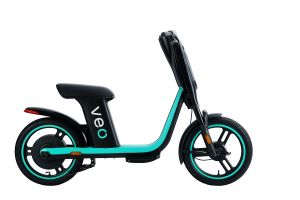 Sarasota, FL – New micro-mobility transportation options will soon be available to residents and visitors of Sarasota after the City Commission on Monday approved an agreement with an e-scooter and bike sharing provider.
Sarasota, FL – New micro-mobility transportation options will soon be available to residents and visitors of Sarasota after the City Commission on Monday approved an agreement with an e-scooter and bike sharing provider.
Veo, a nationwide company based in Chicago, was selected as the exclusive operator in designated areas across Sarasota. About 350-400 scooters (both seated and stand-up) and 50-75 bicycles (traditional and pedal-assisted) will initially be available for rent, with the company having the option to increase the rental fleet if usage requirements are met.
City staff will now be assessing areas of the City where scooter and bike corrals may be operated via geofencing and establishing parking corrals. The service is expected to be available in about 45 days.
Rental costs for scooters will be $1 to unlock them via a mobile app, and 37 cents per minute. Bike rentals will be 50 cents per half hour. Through its Veo Access program, the company also offers discounted rates to low-income users who qualify.
The City will receive a share of the company’s revenues as part of the two-year agreement.
“We’re very excited to be bringing these convenient, safe and cost-effective transportation options to Sarasota,” said Mayor Erik Arroyo. “Having a micro-mobility program will help fill in the gaps in our transportation network for first-mile and last-mile trips to help our citizens get where they want and need to go. I’m looking forward to a long and successful partnership with Veo.”
As part of the agreement, the company has committed to employing locally based staff who will be available to repair and replace vehicles, return misplaced scooters and bikes to parking corrals and respond to any issues.
“Many of the industry’s biggest companies responded to the City’s call for vendors, but we were most impressed with Veo’s plan to make this a true partnership and serve the unique needs of our community,” said Parking Division General Manager Mark Lyons.
Veo operates in more than 35 cities across the country, including St. Petersburg and Gainesville here in Florida.
For more information, visit veoride.com or contact the City of Sarasota Parking Division at 941-263-6475.
About the City of Sarasota: Distinguished by U.S. News and World Report as one of the top 10 Best Places to Live in the U.S., the City of Sarasota is a diverse and inclusive community located on Florida’s Suncoast with 56,000 year-round residents, several internationally recognized cultural arts venues, stunning sunsets along Lido Beach and Major League spring training baseball with the Baltimore Orioles. Learn more about us at www.SarasotaFL.Gov

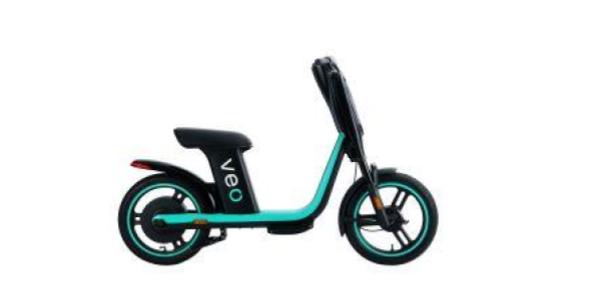
 E-scooters and e-bikes will be able to operate on bike paths and sidewalks just like regular bicycles while respecting pedestrians just as regular bikes must in Ann Arbor, Mich., whose City Council gave unanimous preliminary approval to a personal mobility vehicle ordinance last week.
E-scooters and e-bikes will be able to operate on bike paths and sidewalks just like regular bicycles while respecting pedestrians just as regular bikes must in Ann Arbor, Mich., whose City Council gave unanimous preliminary approval to a personal mobility vehicle ordinance last week. By Joshua Cantor, CAPP, and Janet Walker
By Joshua Cantor, CAPP, and Janet Walker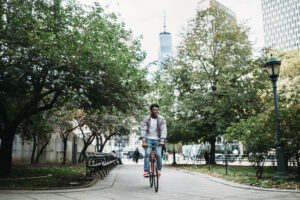 COVID-19 saw a boost to micro-mobility and to biking in cities and urban areas in particular. Those numbers continue to climb, at least in New York City, where more and more residents, visitors, and commuters are embracing two-wheeled transportation through the city.
COVID-19 saw a boost to micro-mobility and to biking in cities and urban areas in particular. Those numbers continue to climb, at least in New York City, where more and more residents, visitors, and commuters are embracing two-wheeled transportation through the city.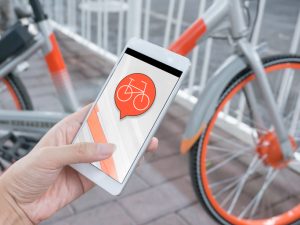 Micro-mobility share has traditionally been managed by municipalities, campuses, or the agencies that brought it into a system. But one expert writes things like bike-share should be managed by transit agencies, and some are beginning to move in that direction.
Micro-mobility share has traditionally been managed by municipalities, campuses, or the agencies that brought it into a system. But one expert writes things like bike-share should be managed by transit agencies, and some are beginning to move in that direction.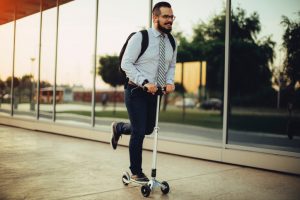 Eight micro-mobility companies have formed a coalition in Europe to claim their seat at the transportation planning table.
Eight micro-mobility companies have formed a coalition in Europe to claim their seat at the transportation planning table. By Kelly Koster
By Kelly Koster Experts say micro-mobility will emerge as a major form of transportation, especially in cities and on campuses, as we re-open after COVID-19. How do you think the industry could best take advantage of this trend?
Experts say micro-mobility will emerge as a major form of transportation, especially in cities and on campuses, as we re-open after COVID-19. How do you think the industry could best take advantage of this trend? The transportation committee of the Los Angeles City Council approved strict new rules governing micro-mobility distribution and use through the city but delayed roll-out until the end of the year. Companies providing shared scooters and bikes praised the delay, saying the new regulations are too expensive and difficult to comply with, and they hoped an extra few months will present time for everyone to find a middle ground.
The transportation committee of the Los Angeles City Council approved strict new rules governing micro-mobility distribution and use through the city but delayed roll-out until the end of the year. Companies providing shared scooters and bikes praised the delay, saying the new regulations are too expensive and difficult to comply with, and they hoped an extra few months will present time for everyone to find a middle ground.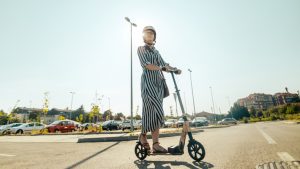 Commuters in England, Scotland, and Wales will soon have a new way to get around: As of July 4, shared e-scooters are legal on their roads.
Commuters in England, Scotland, and Wales will soon have a new way to get around: As of July 4, shared e-scooters are legal on their roads.